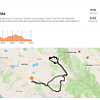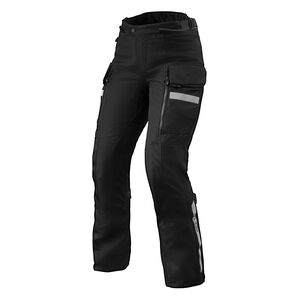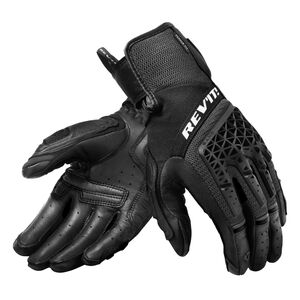Instead of “walking a mile in someone else's shoes,” I’d like to invite you to ride a few miles in my moto boots. Because once you have, the logic behind Kawasaki’s decision to produce the 2023 Kawasaki KLR650 S becomes vivid.
The KLR650 S is essentially the same updated and fuel-injected KLR650 Kawasaki introduced last year but with a 32.1-inch seat height (2.2 inches lower than the regular version), so it’s aimed at riders like me. Being a short and lightweight rider means overcoming a few more hurdles compared to my fellow average-sized compatriots. One of those hurdles is seat height, an issue often surrounded by taboo and controversy.
Despite the arguments for or against lowering a motorcycle, many motorcycle manufacturers have opted to offer lowering accessories and lowered models direct from the factory to better accommodate riders of all sizes and skill levels. If you are looking for a review of the standard KLR 650, I encourage you to read Spurgeon’s take on the latest iteration of the storied dual-sport. If you are vertically challenged as I am and want to know more about the differences of the KLR650 S, then you have come to the right place.
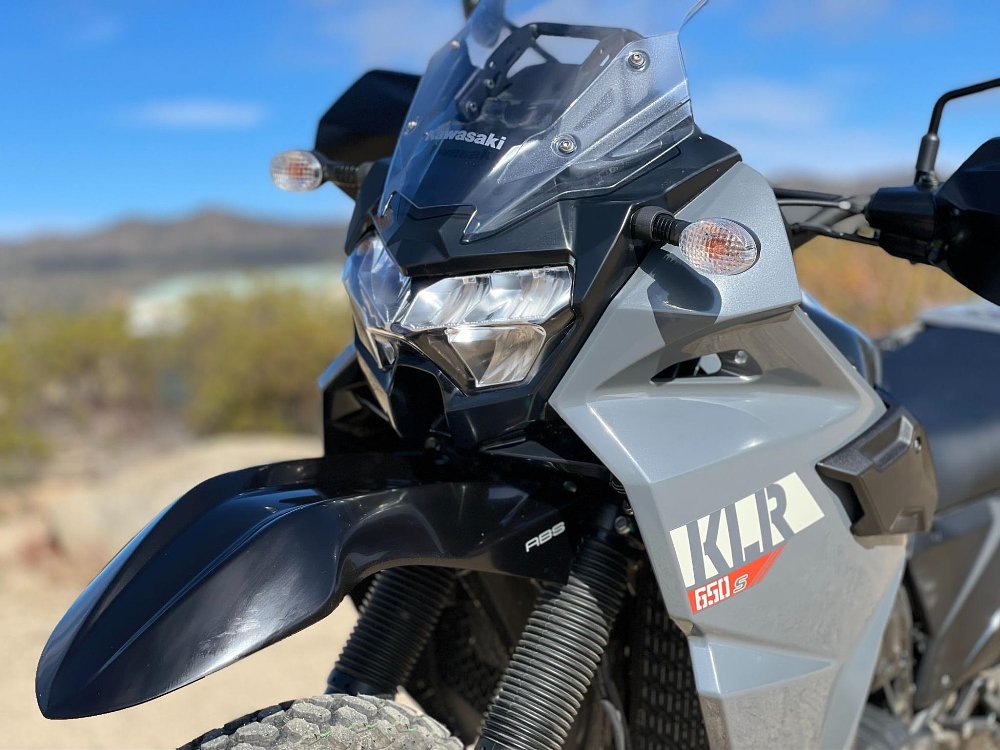
The lowered KLR650 S is a game changer
The difference of more than two inches in the seat height is immediately noticeable in the saddle. At five feet, four inches tall, and with a 31.5-inch inseam, I could comfortably balance on the balls of my feet with the 32.1-inch seat height of the KLR650 S. The KLR 650 Adventure bike in comparison was a perilous teeter-totter. I was unable to put both feet down due to the 34.3-inch seat height.
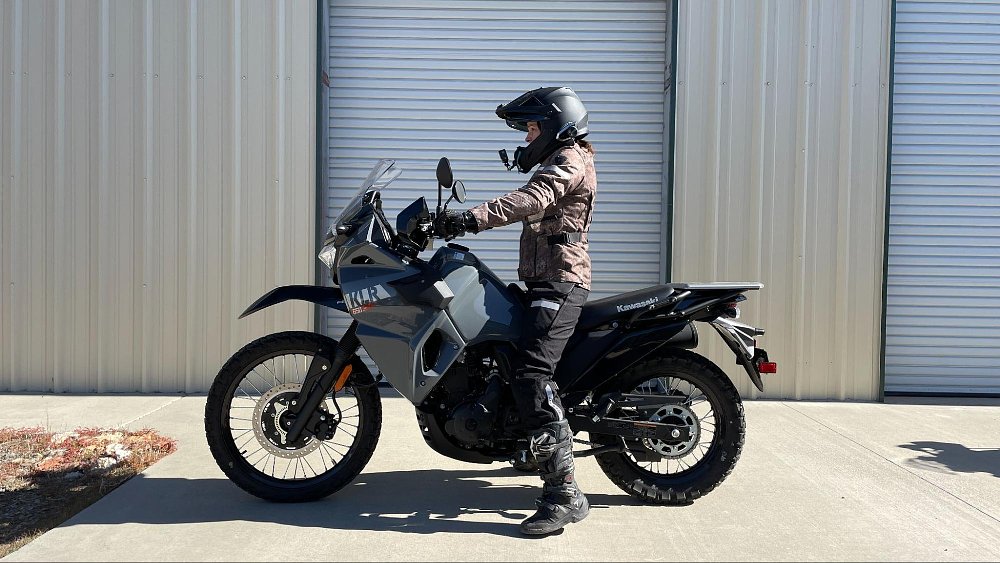
Now it’s true I have ridden taller motorcycles (the KTM 300 EXC-F comes to mind, measuring in at a 37.8-inch seat height), but the weight and width of those motorcycles made them a tad more approachable than the KLR650. As I fidgeted and bobbled on the KLR650 Adventure in the safety of my driveway I had to ask myself: Do I want to experience this sensation at every traffic light? Do I want to experience it on the trail when there is a sudden stop? Do I want to experience it when trying to pull a U-turn on an off-camber low-traction dirt road?
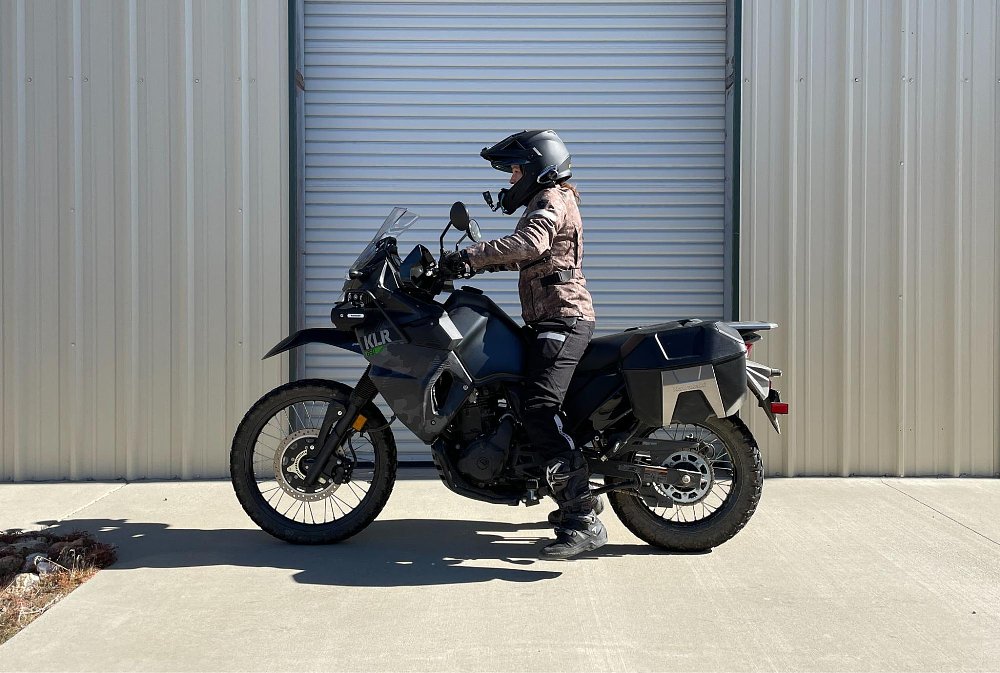
I ultimately decided to begin my test ride on the lowered S version, hoping a warmup on a familiar truck trail would boost my confidence for riding the KLR650 Adventure later on in the day. This bike swap was crucial for answering that most pressing question when it comes to lowered bikes — do the lowering modifications have a negative effect on the performance of the KLR?
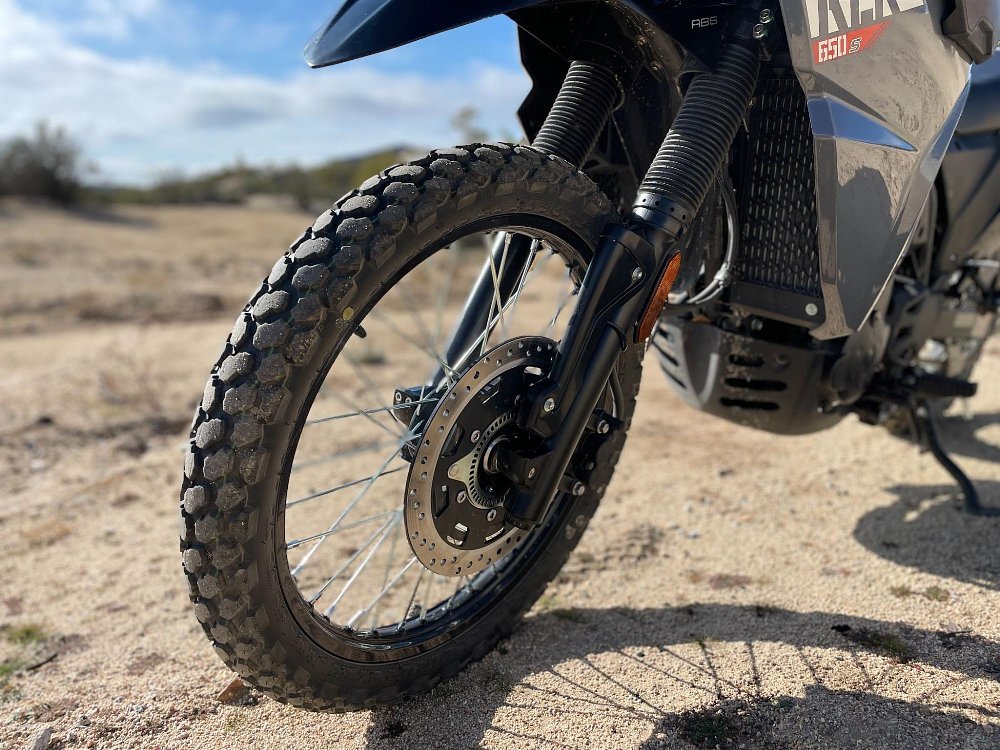
Kawasaki achieved the two-inch dip on the S version through a series of modifications. The KLR650 S utilizes a slimmer profile seat and recalibrated suspension settings such as spring rate and damping to make the seat height as low as possible.
On the spec sheet, these changes result in some noteworthy differences between the standard and the S version of the KLR. Essentially there is a one-inch reduction in ground clearance, and a one-inch loss in front and rear suspension travel on the KLR650 S. The suspension changes result in some changes to the rake and trail and wheelbase measurements, too. Arguments against lowering a bike often center around the adverse effects of “messing with the geometry” of the motorcycle. I set off to find out if Kawasaki had gone too far and diminished the capability of the KLR.
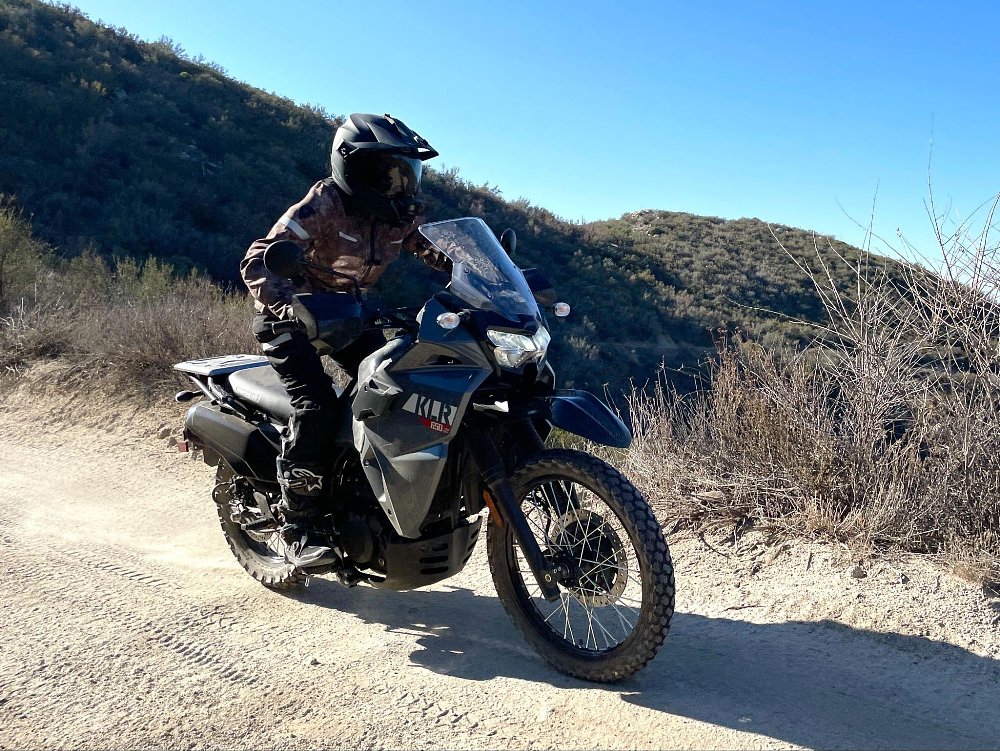
The KLR650 S on the truck trail
The ride started on a truck trail I ride frequently and often use as a testing ground for off-road motorcycles that rotate through my garage. Despite all that experience, the KLR650 S demanded a concerted focus on my part. A slide out of the front tire in a loose corner reminded me the KLR has tires better suited for the street, and the hefty weight I had to save with a foot plant was also a warning that the KLR650 S has a lot more mass than I am used to. The fact that I could foot plant and save that little slide out was proof that the lowered KLR650 S was already doing me a favor, as this scenario might have ended differently on the full-sized KLR.

In the off-road environment, the KLR650 S did have its own quirks and character that I learned to adapt to. For instance, the KLR650 S responds well to a sit-down approach for off-roading. Typically, the more you can do to aid the suspension with a standing-on-the-pegs position is ideal for off-roading, but the KLR seemed to roll over the terrain with the same level of competency in either position. In relation to the riding position, a few other factors turned me off from the usual standing position on the KLR. The rubberized foot pegs, while a smart choice to dampen the vibrations of the big single cylinder at buzzy freeway speeds, gave a vague, squishy feeling in the upright stance. The large gas tank with its sloping contour was difficult to grip between the knees. Finally, the foot controls weren’t the friendliest for the motocross boots that I typically wear on ADV rides.
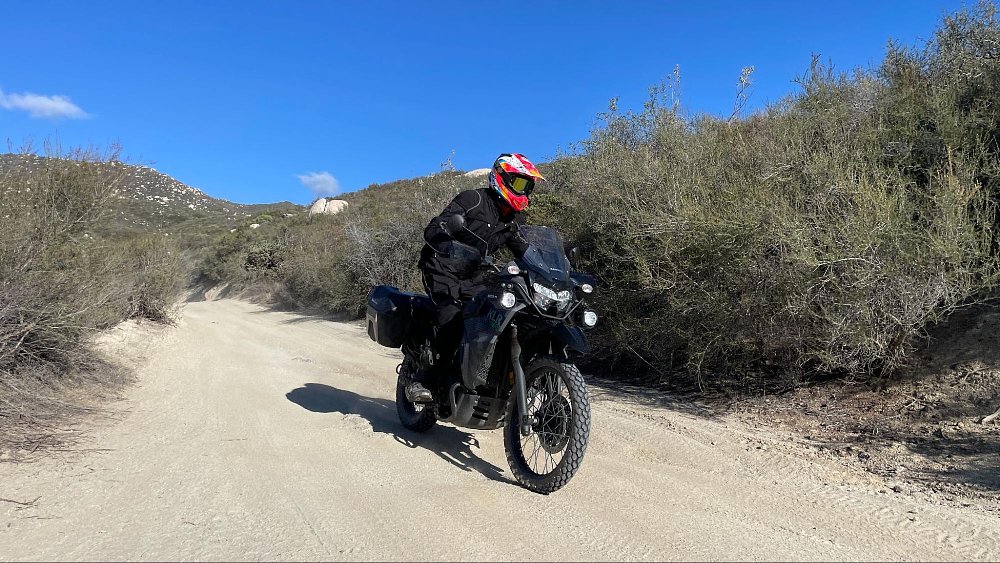
The gearing of the KLR650 S also tempered the pace of the truck trail excursion. The entire gearbox is consistently tall, better tailored for street riding where Kawasaki is betting the typical KLR owner will do most of their riding. What this ultimately led to was the vast majority of the off-road ride was spent in first gear because it was so tall. When first gear would begin to finally wind out around 30 mph, clicking into second would result in an instant bogging sensation and total loss of any reaction to throttle inputs. I did numerous test blips in second gear to see what the response would be for a quick power hit to lighten the front tire, and each rip on the throttle was met with a sleepy response from the KLR. Perhaps on some wide-open and graded fire roads the KLR could roar along in second and third gear, but on the tight and winding uphill truck trail that climbed the San Jacinto mountain ridge, we were relegated to first gear for most of the trek.
So for the rest of the ride I adopted a mindset of “Be kind to the KLR, and it will be kind to you!” I carefully chose my lines through the rocky sections and rain ruts, I kept the pace mellow, and the KLR650 S was happy to tractor along. With this newfound Zen on the KLR650 S, I enjoyed a relaxing and peaceful ascent into the pine trees.
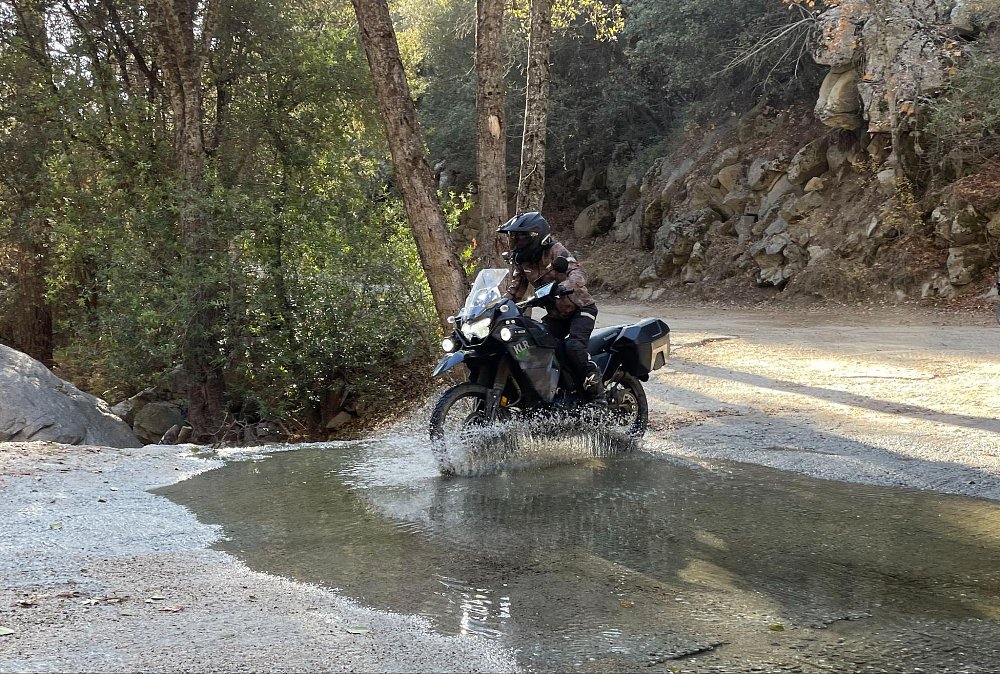
At a scenic water crossing deep in the pines, it was time for the inevitable bike swap. Just the slightest incline in the trail flummoxed my attempts to lift the KLR650 Adventure off of the kickstand, and I hobbled the full-size KLR in three-point turns on the trail as we took a few mandatory photos. Though both KLRs weigh the same, the lowered S version made a world of a difference for all of these small, tedious maneuvers. The question tickled my mind once again — was there that much more performance hiding in this tall KLR650 Adventure that it made the S version irrelevant? With all the slow-speed tasks out of the way, it was time to finish off the truck trail on board the big KLR and find out for sure.
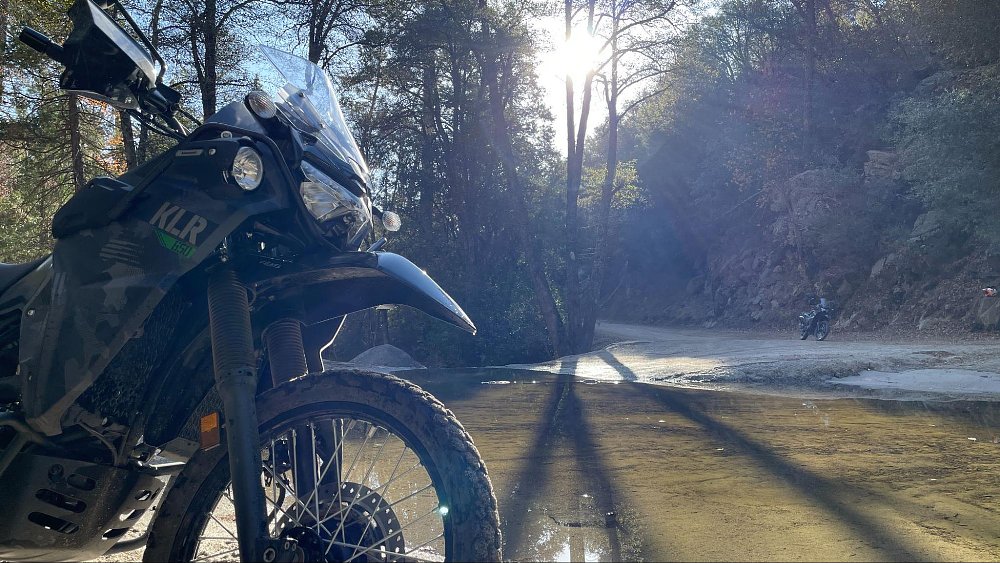
Despite my acute awareness and attention to it, I had trouble discerning a true difference in the suspension and handling of the KLR 650 Adventure. The biggest difference was in the seat itself. The extra padding was noticeable immediately and more comfortable than the shaved seat of the KLR650 S. Otherwise, the performance on the remainder of the truck trail was nearly identical between the two bikes. I questioned my fellow test rider who had just taken his turn on the KLR650 S, and my inquiries were met with a shrug and the shake of the head. He too had a hard time really pinpointing a difference, and so we vowed to do a backyard lap test after our ride, where the terrain would be directly comparable and make it easier to distill any differences between the two bikes.
The KLR650 S on the street
Having summited the mountain on the truck trail, it was time to go all the way down it on some seriously fun twisty roads. We joked about the insanely long feelers on the foot pegs. Any chance we would drag those on our curving road home? There was one way to find out.
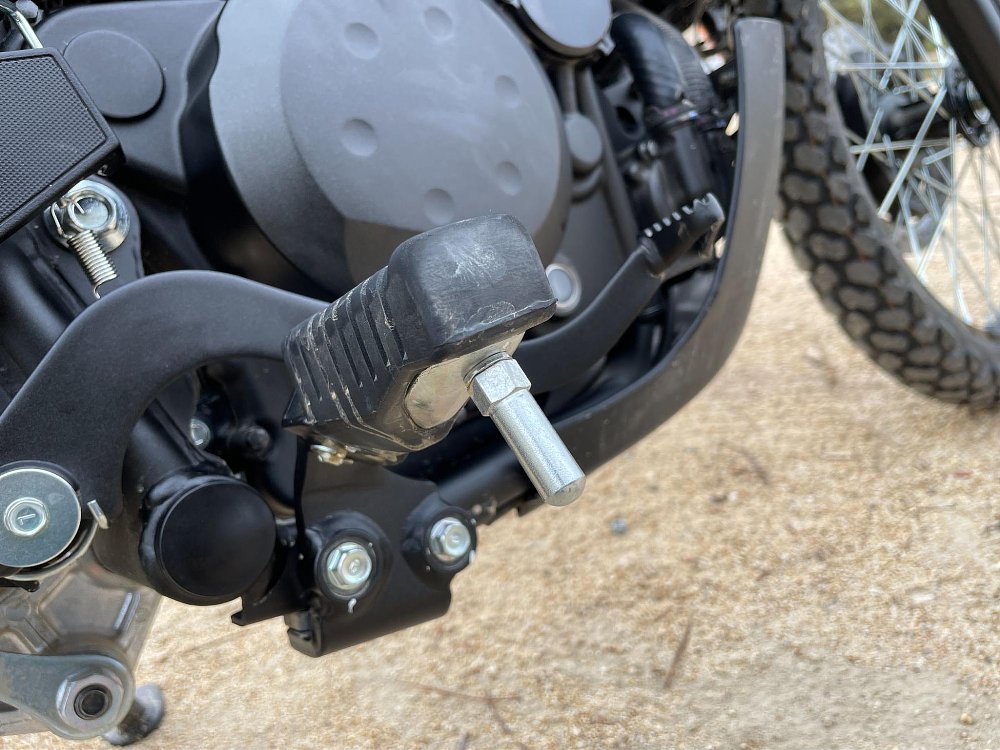
Our route back down the ridge took us through the charming mountain town of Idyllwild and at this elevation the roads were tight and twisty. The KLR650 S’s cornering performance exceeded all my expectations. To be blunt, I didn’t have great expectations to begin with, but the KLR is deceptively good in the corners of a street ride. The weightiness of the KLR that made me shy on the trail was much easier to command on the grip of the pavement, and the tires hooked up better here, too, compared to my experience in the dirt. While it managed the hairpins alright, where the KLR really sang was in the long sweepers further along our descent. Even in decreasing-radius turns, when the weight of the KLR is settled into a corner and fully planted it continues to carve with reassuring stability. For the eventual fast, straight, and boring miles we had to clock to get home, the KLR hummed along comfortably, which is more than I can say for many dual-sport machines I’ve flogged and tortured on similar street rides.
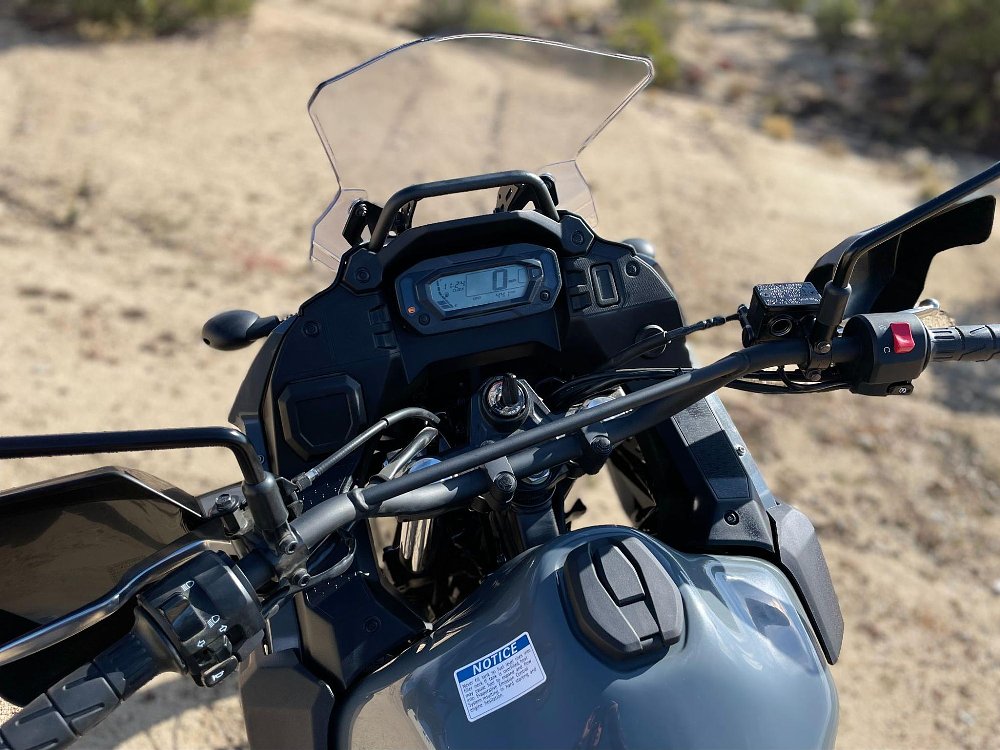
Our street swap of the KLR models once again resulted in some confused head-scratching, for neither of us could find the “aha” moment when the S version revealed a fatal flaw. We rode both models as aggressively as we felt warranted for the back country roads, and a discernible difference in the handling of the S version eluded us yet again.
It was time to truly get to the bottom of this, so we went on back-to-back laps on the backyard scrambler track to get repeatable and easily comparable points of reference on the suspension of the two KLRs. After heightening our senses to be hyper aware of any minute difference and quizzing each other after every lap, we agreed on some minor differences between the two models.
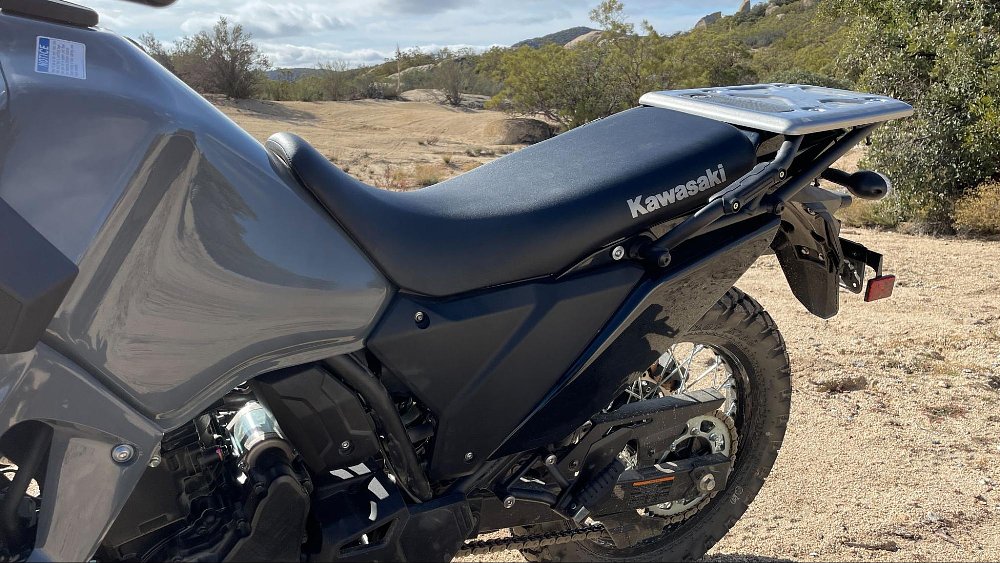
Hands down the most noticeable differentiating aspect between the two motorcycles is the slim profile seat of the KLR650 S. It is undeniably less plush compared to the KLR Adventure, which may become a point of contention for the rider out there looking to log very long days in the saddle. Next, in this controlled environment we could feel the longer stroke of the front fork of the KLR 650 Adventure at work compared to the S version. Even with that said, the S version handled all of the backyard lap without bottoming out or showing adverse effects. It just was ever so slightly shorter in its stroke as it soaked up the terrain. It honestly feels like splitting hairs, and the fact we had to run such a focused test after our main test ride reveals that the lowered S version meets all the same levels of performance expected of the KLR650 platform in general.
My guess is that only in the most extreme conditions would the S version begin to show weakness, say over some large log obstacles where the ground clearance could become problematic or through aggressive whoops. At which point I would have to ask, is the KLR650 in any of its iterations the right weapon of choice for that kind of ride? In my mind, the answer is a “no.”
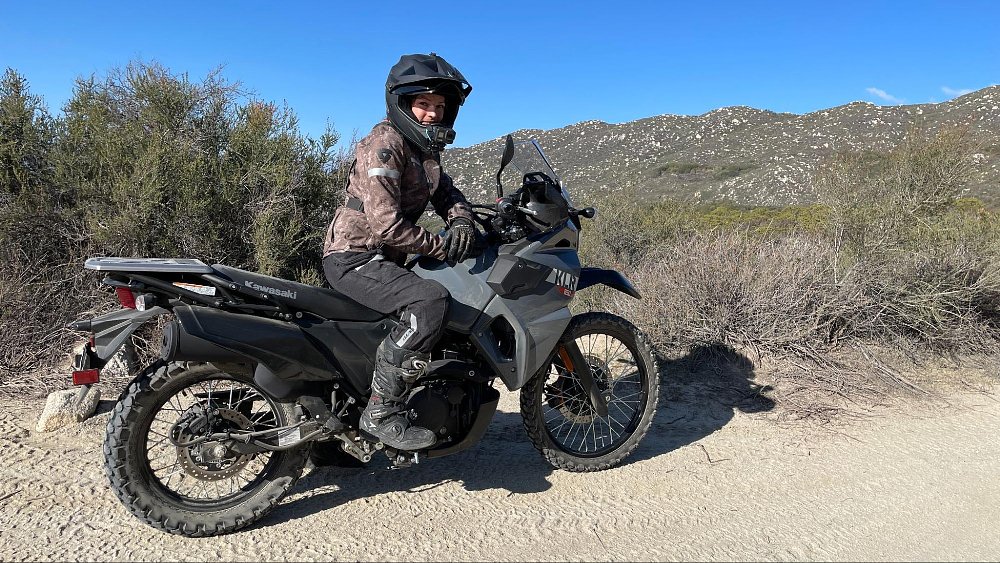
Same KLR, but new opportunities on the KLR650 S
Some riders scoffed at the “NEW” branding of the 2023 Kawasaki KLR650 S, but for a rider like me who has never entertained the KLR650 as a possibility due to its size and weight, it actually is a whole new option for consideration. I understand there are short riders out there who pride themselves on riding and owning tall, heavy adventure bikes and it is a badge of honor for them to not lower their motorcycle. That’s all well and good, but I’m a rider who prefers to "work smarter, not harder” and I will take any advantages I can to improve my riding. A shorter seat height for me means instant access to more control over a motorcycle, and as long as that seat height hasn’t come at the detriment of the handling of the KLR650, then the S version really isn’t taboo after all. A lower seat height on the KLR benefits not only a shorter rider like myself, but also the newer rider of average height who is still learning the tricks of keeping a bike upright, or an older rider struggling with flexibility (don’t laugh, I hear this one a lot and may I remind you that old age comes for us all).
So the final verdict is the KLR650 S provides a 2.2-inch lower seat height, with no noticeable change to its performance capabilities, and the only negative being a slightly harder seat to sit on. For a short rider like me, it’s a small price to pay for the larger gain of stability and bike control, and newfound opportunity to enjoy the KLR650 rather than be stressed out by it.
| 2022 Kawasaki KLR650 | |
|---|---|
| Price (MSRP) | $6,899 base, $7,199 with ABS |
| Engine | 652 cc, liquid-cooled, DOHC, four-valve, single cylinder |
|
Transmission,
final drive
|
Five-speed, chain |
| Frame | Semi-double steel cradle frame |
| Front suspension | 41 mm fork; 6.7 inches of travel |
| Rear suspension | Uni-Trak monoshock, five-step preload adjustment, stepless rebound; 7 inches of travel |
| Front brake | Single two-piston caliper, 300 mm disc, optional ABS |
| Rear brake | Single-piston caliper, 240 mm disc, optional ABS |
| Rake, trail | 29.5 degrees, 4.6 inches |
| Wheelbase | 59.6 inches |
| Seat height | 32.1 inches |
| Fuel capacity | 6.1 gallons |
| Tires | 90/90-21 front, 130/80-17 rear |
| Claimed weight | 456.2 (non-ABS), 460.6 (ABS) |
| Available | Now |
| Warranty | 12 months |
| More info | kawasaki.com |










